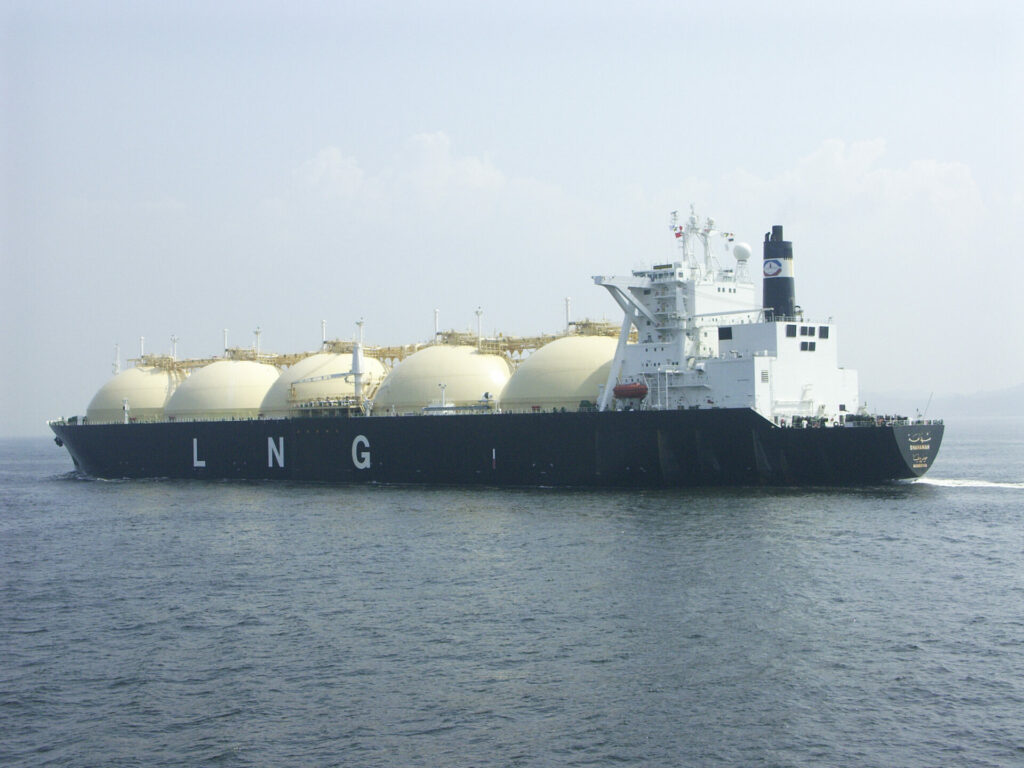In a bid to maximise profits, ships carrying liquified natural gas (LNG) sometimes wait for weeks at sea in anticipation of higher prices. Yet the waiting game can go both ways, with the cost of idling offshore exceeding the cost of unloading.
Currently, several ships filled with gas are anchored off the coast of Spain’s Bay of Cadiz and will be there until late November when prices are expected to rise again, Reuters reports. The ships have been circling the Iberian coast and the Mediterranean sea for several weeks, apparently unable to secure slots to unload their supplies of LNG. Once onshore, the liquid is turned back into a gas and fed into the European gas network.
Since the start of Russia’s invasion of Ukraine, Europe has scrambled to increase its LNG capacity, building new terminals to allow for increased shipments of liquified gas originating from Arab countries and the US. But increasing capacity takes time and Europe still lacks regasification capacity, with many Member States heavily dependent on pipeline deliveries via Russia.
In anticipation of gas shortages with winter approaching, the EU has made a concerted effort to replenish gas reserves. As a result, the bloc has now filled almost all of its gas stores to capacity, leaving no room for additional supplies.
Playing for time
Yet some experts assert that the large queues at LNG hubs are not the result of insufficient capacity but rather a trading strategy by tanker-owning companies. Numerous industry sources suggest that by stalling for time, companies can wait for periods of high prices and maximise profits.
“They are waiting for high prices. If one single idling vessel discharges its cargo, prices will immediately be brought down, affecting the other cargoes on the queue. This domino effect is a blow to opportunity costs,” one industry source told Reuters.
Fortunately for wholesale consumers, the price of gas recently reached its lowest level since June, dropping by 28% last week. This is largely a consequence of high gas reserve levels and an unusually mild October.
Experts predict that some LNG tankers and storage ships will push deliveries until November to maximise profitability. Naturally, this trend would have an inflationary effect on gas prices.
Maximising bumper profits
Of the nine ships anchored off the coast of Cadiz on 26 October, three belonged to Spanish company Naturgy. It would also appear that international companies are playing for time. One ship belongs to energy giant BP, three to commodity trader Tafigura, and one to U.S company Cheniere. Some others at anchor are currently empty.
A spokesperson for Naturgy claimed that its ships had been assigned discharge slots in Spain and were waiting for those dates to unload. According to Spanish port authorities, some ships have been waiting since mid-September.
Related News
- European energy prices fall due to warm weather
- Germany expects to import 25 billion cubic metres of LNG in 2023
With major LNG hubs full to capacity and the price of natural gas dropping fast, the price of natural gas is in contango, meaning that futures prices are higher than spot levels.
While current low prices may reduce the incentive to sell, the price of gas is still much higher than those recorded before the European energy crisis. Energy companies are posting bumper profits on the back of high gas prices as a result of the war in Ukraine.
ExxonMobil smashed record quarterly results, posting a profit of $19.7 billion. Other companies with significant stakes in gas, such as TotalEnergies and Shell, posted $9.9 billion and $9.5 billion in profits respectively.

